Update: Sign the online petition to voice your support for the Beach Flats Community Garden
Upon agreeing to be photographed in his plot, José quickly spots and plucks a small wild radish, erasing the visual signature of the only notably protruding weed in his immaculate expanse of gleaming bush beans. We laugh together. Verbal communication is haphazard between us, but as a proud grower myself, his action speaks loud and clear.
In fact, even before I met any of the jardineros of the Beach Flats Community Garden, just by strolling through I gained a good sense of how the gardeners might feel about their creation here: Pride shines from every plant. From Santa Cruz to Seattle, this must be the most well-utilized community garden space I’ve visited. Certainly by biomass measure, it contains more plant matter per square foot than any allotment ground I’ve seen. From vine-entwined fenceline to vine-entwined fenceline, this half acre is packed to the sky with primarily staple crops–real food–healthy and vigorous plants most all of them.

Want to help the garden but not sure where to start?
-
- Sign and share the online petition to voice your support!
- Follow! Relevant social media accounts for updates: [fb1] [fb2] [tw]
- Spread the word! Share this and other articles online, tell the world to #SaveTheJardin! Voice your opinion to local government and media outlets.
- Join the coalition! Organizational meetings are held weekly on Saturdays at 4pm in the garden.

No space remains fallow for long. The only interruptions in the dense foliage of this food garden are its efficient network of footpaths, along with the tree-shaded area where eight of the gardeners and neighbors have gathered in this pre-dusk hour to chat, joke, and play cards.
Unfortunately, the reason I’ve made my first few visits to the Jardin de la Communidad de la Playa is not just to bask in the green glow of a gorgeous garden that I’ve often admired from the levee bike path above. Word has gotten out that after more than twenty years of cultivating and enriching this soil, Beach Flats gardeners are being given the boot. The majority of their garden will be destroyed.
The parcel on which the Beach Flats garden is situated, apparently, is owned by the Seaside Company, operators of the Santa Cruz Beach Boardwalk, whose clattering rollercoasters can be heard reverberating though the neighborhood all summer long. Twenty-some years ago, neighbors banded together to clean up the blighted lot and put it to agricultural use. Beginning in 1994, the parcel was graciously leased to the City of Santa Cruz by Seaside for a nominal fee, such that the city could officiate the garden under the auspices of its well-meaning but strained Parks and Rec Department.
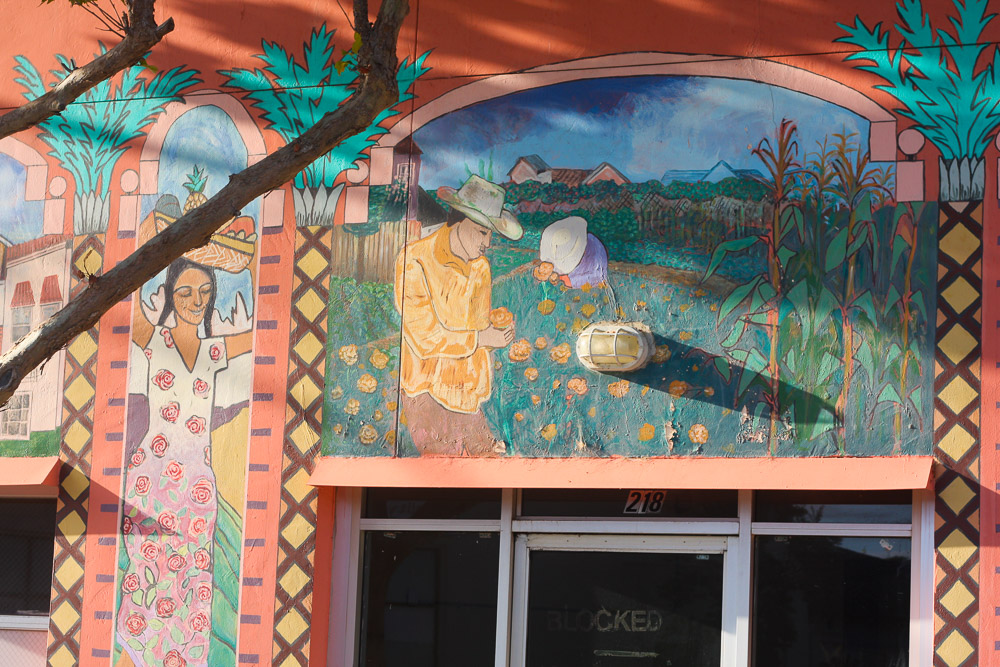

But the Seaside Co. now, once again after a successful community defense of the site in 2008, wants the parcel back (or, rather, some unspecified majority of it). They will purportedly use the lot to stage landscaping operations for their other properties. Neighborhood murmurs suggest that much of the landscaping equipment likely to be moved to this site may be the very same equipment already being stored comfortably at one of the Boardwalk’s several spacious parking lots, just across the street. Regardless of Seaside’s intent for the lot, this half acre garden is dwarfed in comparison to the approximately 16 acres of parking lot surface feeding the Boardwalk in this small neighborhood.
Over twenty years development of neighborhood culture, gatherings, green space, unique agricultural traditions, and home-grown food security are poised to be lost in favor of a couple dozen parking spaces.
It’s hard to avoid hypothesizing: What other purposes might it serve the main landowner in this dense, lower-income, lower-rent neighborhood to eliminate a major cultural pillar of the community?
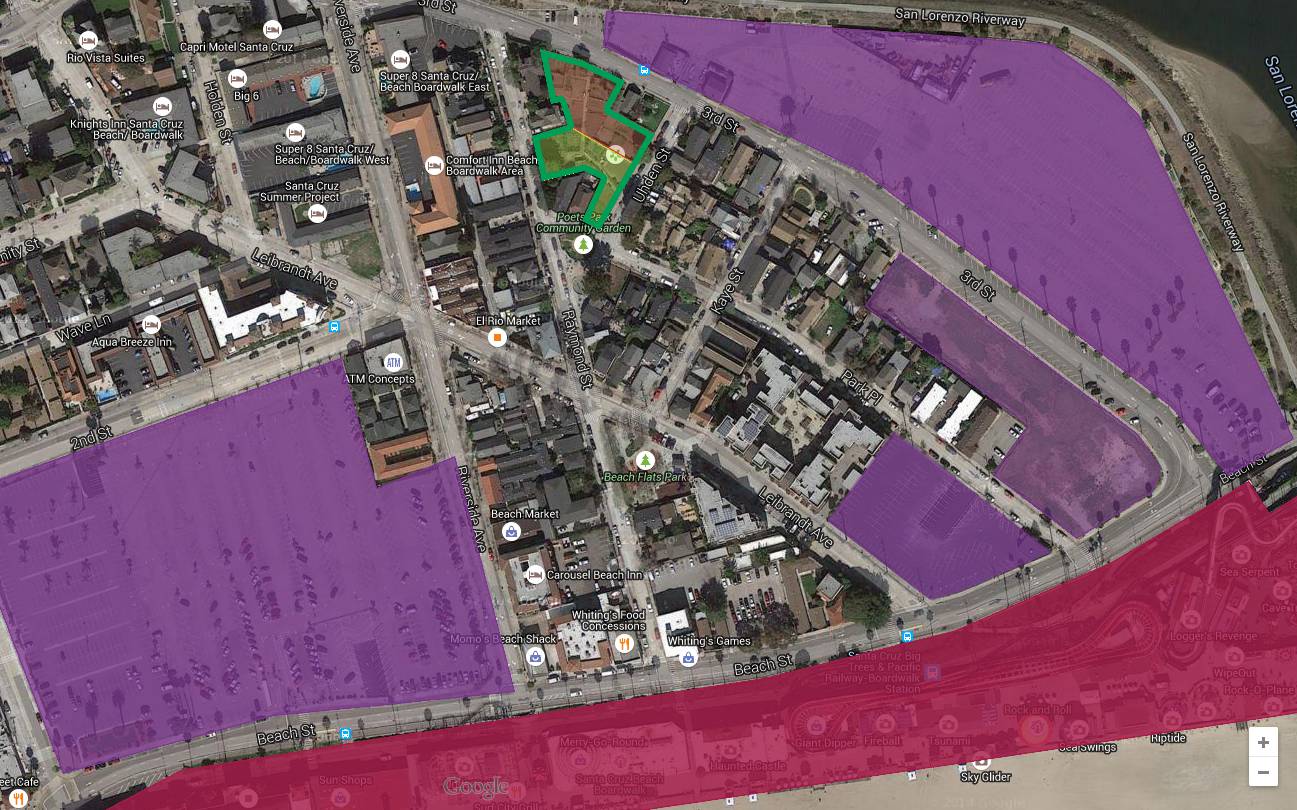
So many people are grateful to the Seaside Company for allowing this world-class exemplar of urban agriculture, and gem of Santa Cruz, to flourish on their property for so long. Why should it now disappear?
As you might expect when a sledgehammer is taken to a cultural pillar, many voices are rising up to express disdain, and community members have begun to gather in various venues to discuss alternatives to the closure of the garden. I’ve returned to the garden a couple weeks after my first visit, this time with Joe Bonanno and Miriam Olivera, young adults like myself, each independently motivated to do what they can for the longevity of the garden. Unlike myself, each of them have previously maintained plots here and have gained significant portions of their horticultural education from the Beach Flats garden community.
We’ve come to reignite a conversation with the garden’s elders. Don Emilio and Don Domingo have been working plots here for decades now, and joyfully perform much of the maintenance on pathways and common areas that keeps the garden looking so tidy. We learn from them that new gardeners here are taught growing techniques by established gardeners, and that seed is handed down from crop to crop, and grower to grower.
We learn from them that it will be difficult to estimate the number of people who eat from this garden. Yes, there are the 25 or so gardeners, but then there are also their extended families. And whatever neighbors stop by during a harvest: they are given fresh produce. And then are the gatherings, when contingents of the neighborhood will come join in celebration at the rear of the garden, and grill sweet elotes right off the stalk.
We also learn that they would appreciate our efforts to help them preserve their garden.
And with the chlorophyll-filtered sunlight trickling down on us between ten-foot corn stalks, the call is strong to preserve this gem of Santa Cruz.
Across the garden, tall atop a row of corn, a faded, hand-painted sign depicts a proud, precolonial native American gardener with the words “Mirando al Futuro”–Look to the Future. What will this future hold for the Beach Flats garden and its neighbors? What do we want our neighborhoods to look and feel like in Santa Cruz?



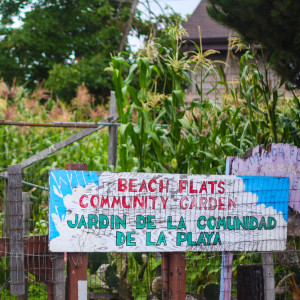
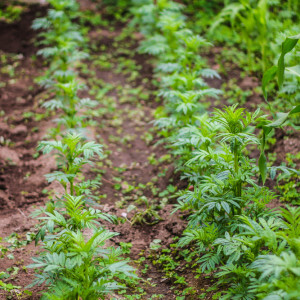
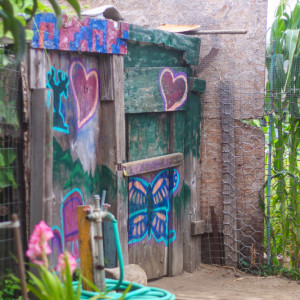
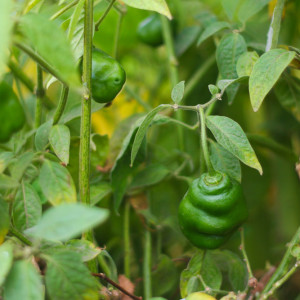
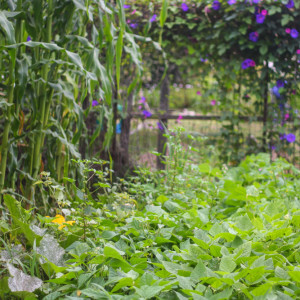
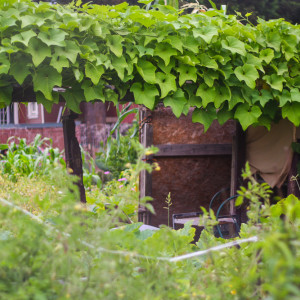
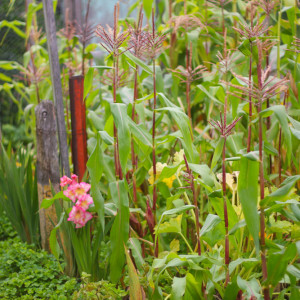
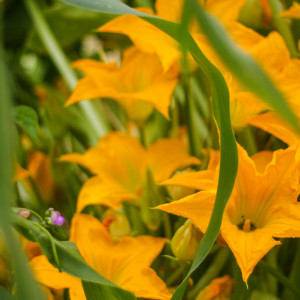
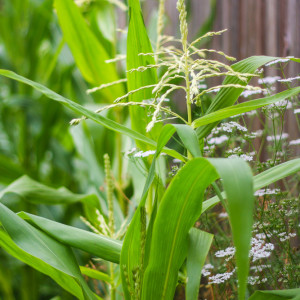
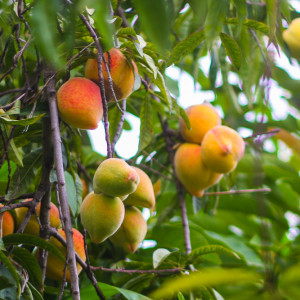
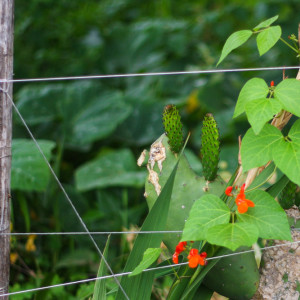
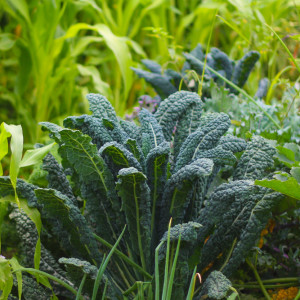
4 Responses
Dennis Etler
Great post Andy. The garden is obviously a labor of love and a beacon of sustainability in what would otherwise be an asphalt wasteland. Let’s all do what we can to stop that from happening.
Andy Moskowitz
Thanks for reading. “Beacon of sustainability in what would otherwise be an asphalt wasteland”… This is another really poignant and accurate framing of this situation.
Several people of my parents’ generation have already independently reminded me of the Joni Mitchell lyrics:
“They paved paradise
And put up a parking lot
With a pink hotel, a boutique
And a swinging hot spot
Don’t it always seem to go
That you don’t know what you’ve got
Till it’s gone
They paved paradise
And put up a parking lot”
https://www.youtube.com/watch?v=xWwUJH70ubM
Sasha Retford Gonzalez
Beautifully written. I am intrigued to visit this community gem soon and help ensure that it continues to be a haven for healthy, affordable food and a place for community members to build connections and teach one another.
Andy Moskowitz
Yes! I am hearing from the gardeners that so much learning and passing of healthy, sustainable food tradition has taken place on this site over the last 20+ years.